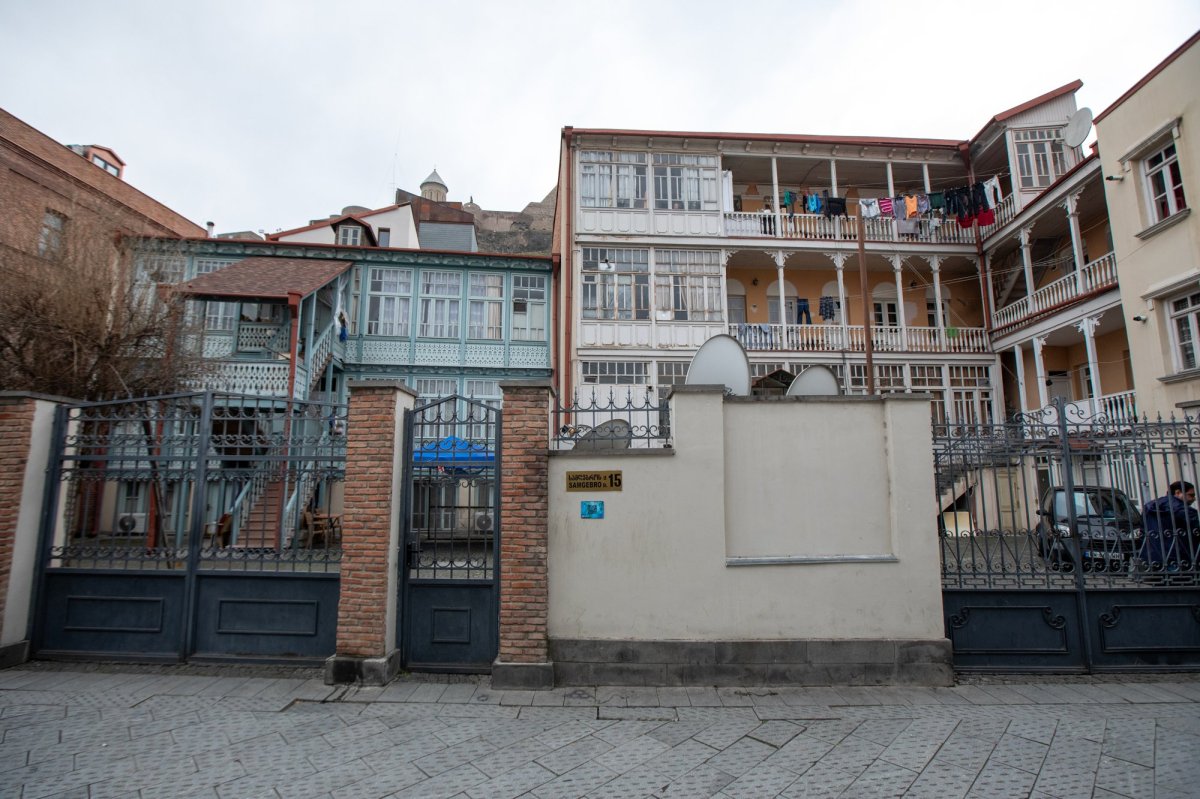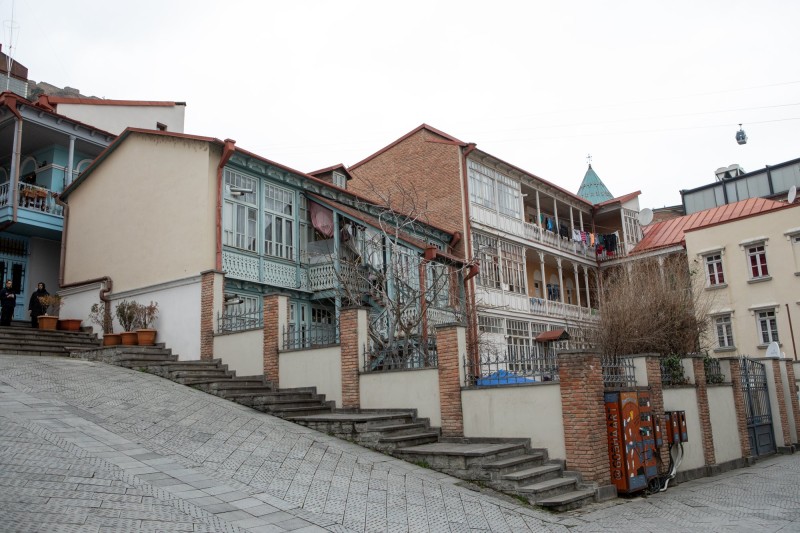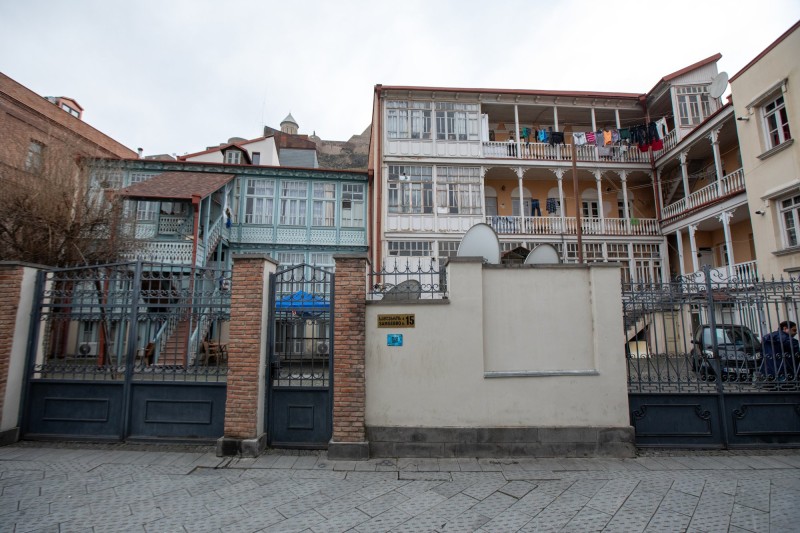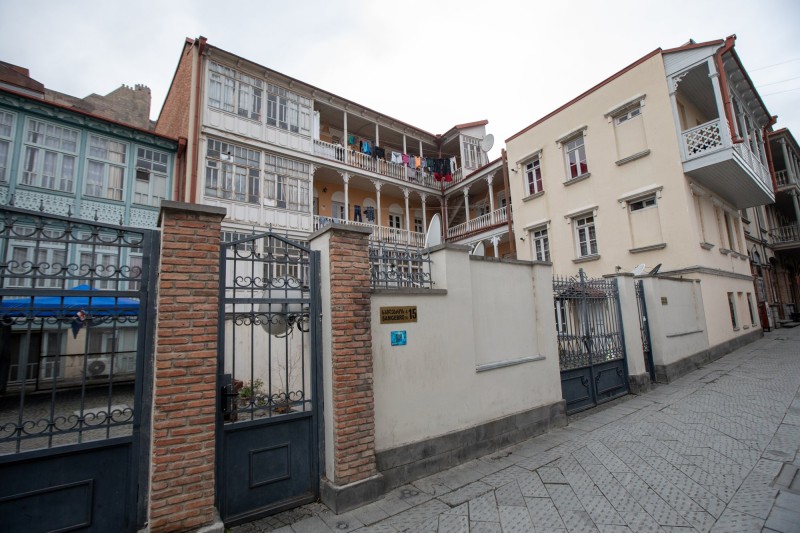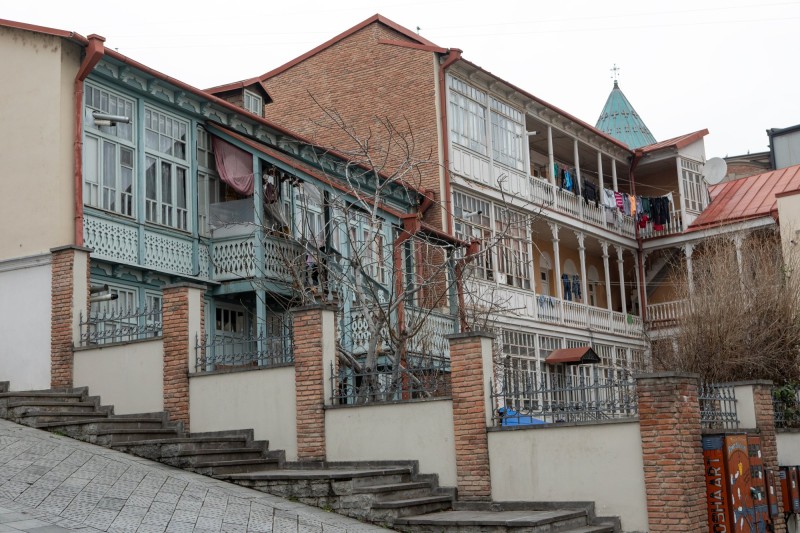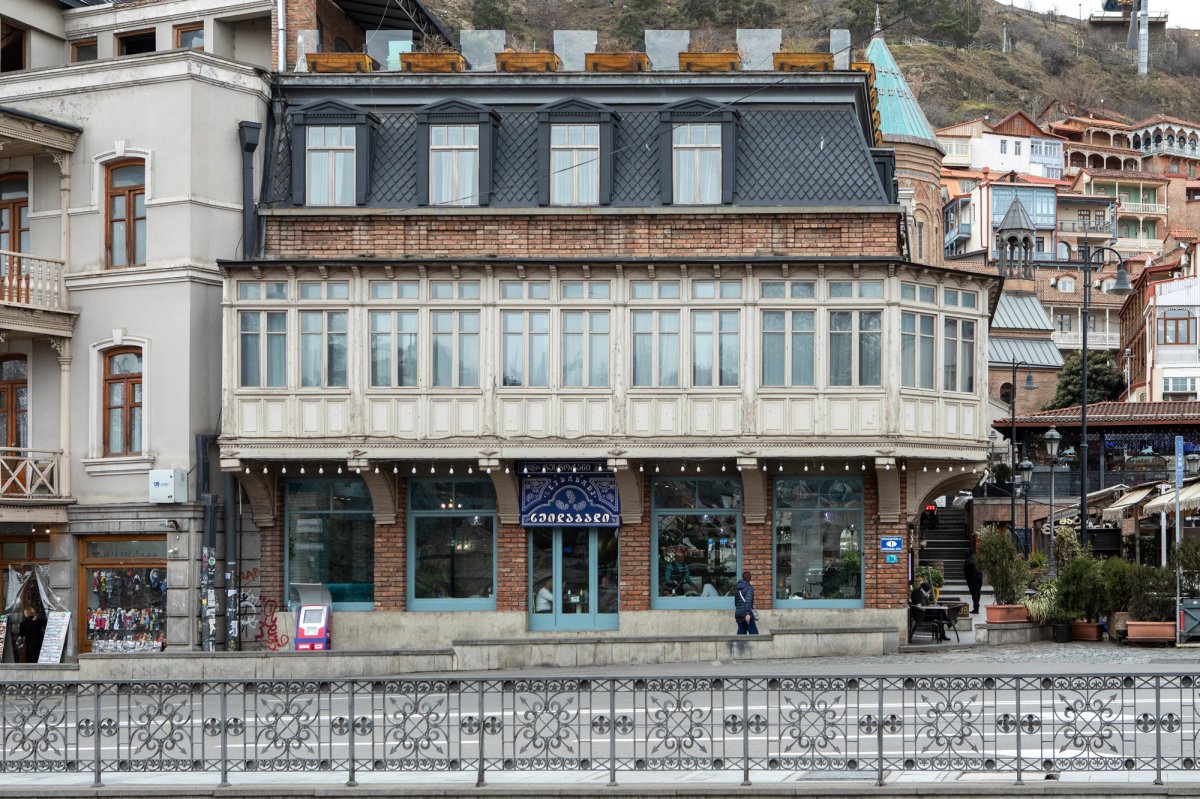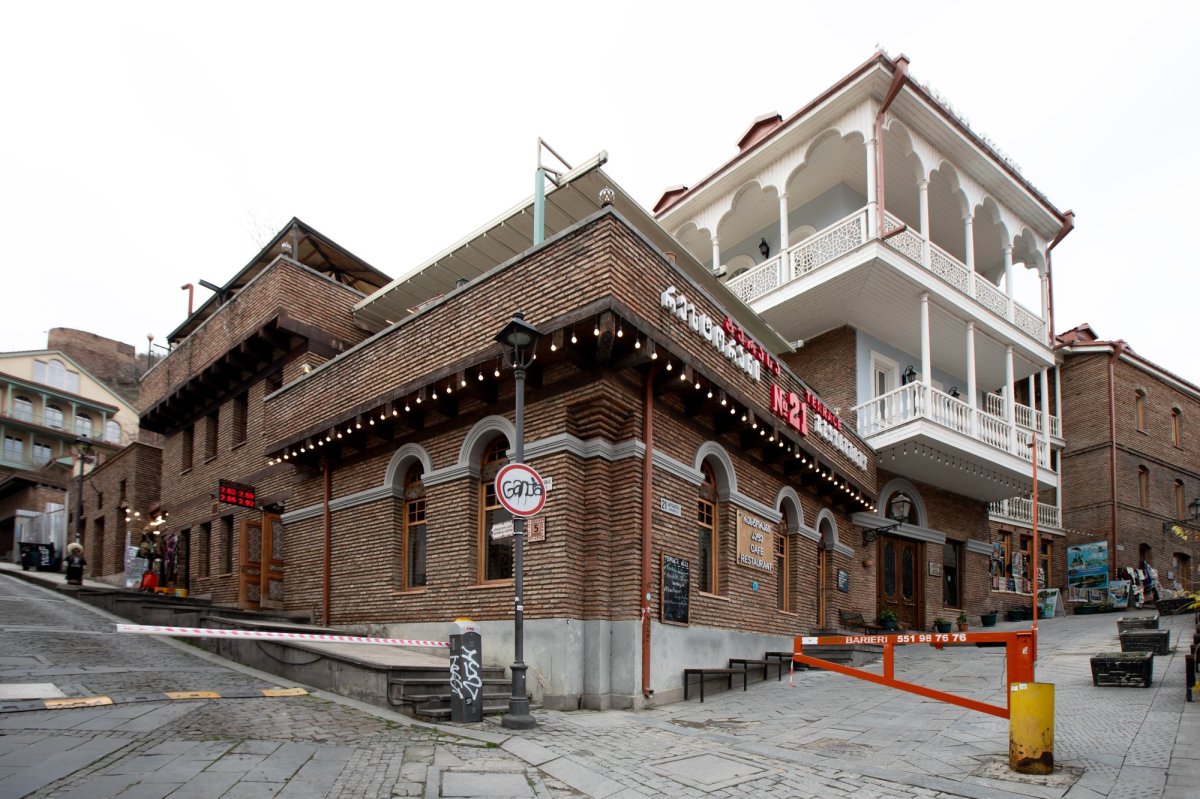
Information in details
The brick-built three-story building with a rectangular volume, located at 15, Samghebro St., dates back to the second half of the 19th century and offers one of the interesting examples of Tbilisi houses with balconies and glass panels. The residential house has a single facade, which opens onto a wide, grassy yard and looks towards Samghebro Street. The main artistic-architectural motif of the building is the wooden glass panels arranged on the entire perimeter. Such wooden balconies or glass-paneled houses of Abanotubani are a kind of visiting card of Tbilisi. This row of houses is well perceived from the left bank of Mtkvari and the Metekhi plateau. The whole street seems to be merged with the construction of the base of Narikala Castle. Samghebro Street is one of the oldest streets of Tbilisi, which is marked on the city plan of 1876. At the beginning of the 19th century, in 1808, due to the fire that occurred on Sion Street and the surrounding lanes, dyeing workshops were moved here from the ancient dyeing row — Lilakhan (now Anton Kathalikos Street). The new station was convenient because of its proximity to the sulfur baths. A natural warm spring flowed into the river. In Dabakhana (Tsavkisi river), where dyers washed fabrics. Samghebro Street was named Samghebro Street in the 1870s.


 თბილისი, Samghebro Street N15
თბილისი, Samghebro Street N15
 41.6888809, 44.8099586
41.6888809, 44.8099586

